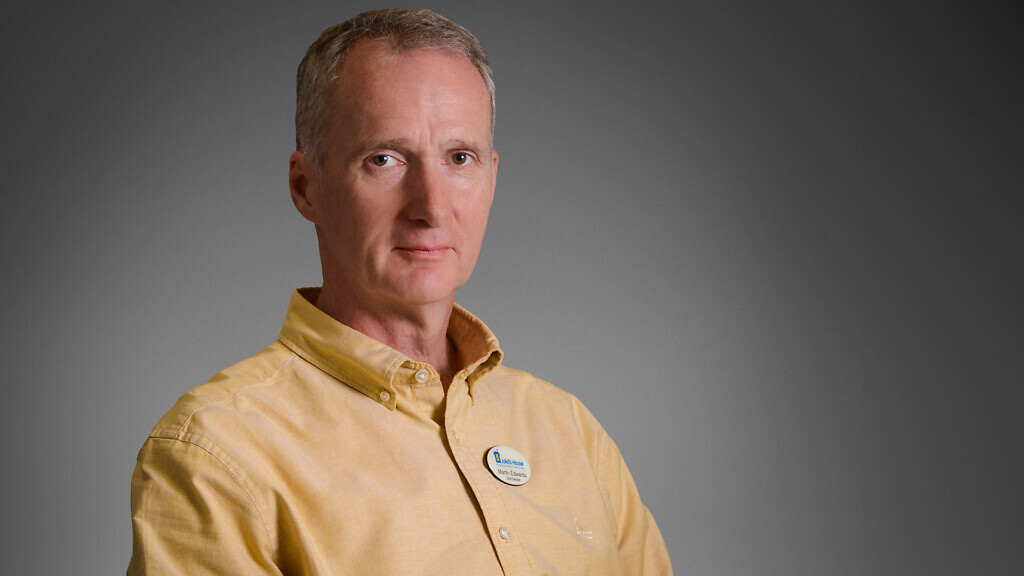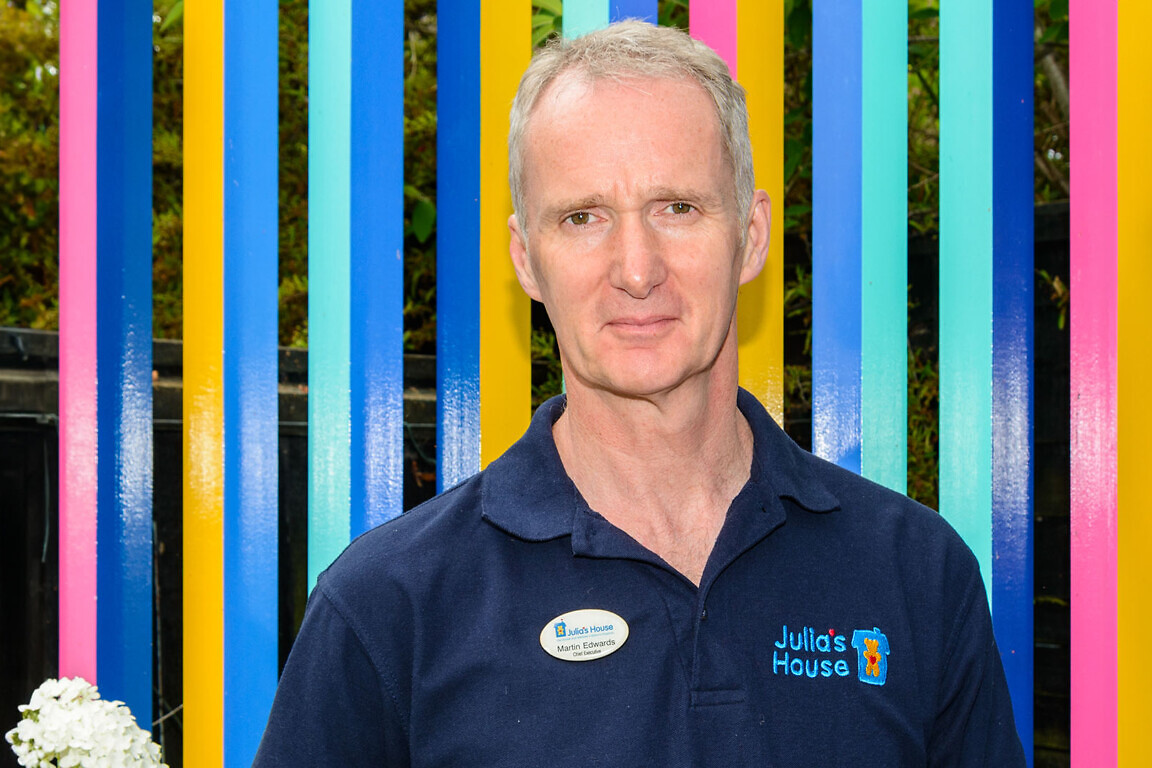The chief executive of Julia’s House explains why government policies have put such a strain on the capacity and the range of services that hospices can offer.
Hospices have come under mounting financial pressure this autumn, since the new Labour government’s first budget at the end of October. Thanks to rising costs and the recent increase in National Insurance contributions, coupled with inflation, deficits have risen.
To put it into perspective, many hospices in England and Wales face an annual financial shortfall of around £1 million, typically 10% of the hospice’s budget.
Martin Edwards, chief executive of Julia’s House, talked to Healthcare Today about the impact of rising costs on capacity and the range of services that the children’s hospice in Dorset and Wiltshire can provide, and why hospices need a sustainable funding model.
Healthcare Today: Could you talk us through your work at Julia’s House and your approach to patient safety?
Martin Edwards: The organisation is a children’s hospice that provides both in-house hospice care and home care. Delivering home care presents unique challenges due to the broader scope of control it requires. This means there must be an even greater emphasis on quality, training, and robust backup systems. Family support is a central part of the service. The hospice employs family support workers who conduct one-on-one visits with parents and siblings to help them cope with the trauma they are experiencing.
The hospice is recognised as one of the top-rated services in the country. It has twice been ranked as the number one charity employer by the Best Companies scheme. This achievement is based on independent staff surveys and benchmarking against other charity employers nationwide. Additionally, the Care Quality Commission (CQC) has awarded the hospice an outstanding rating. During its most recent inspection, the CQC found no areas for improvement, a rare accomplishment in the sector.
Despite these accolades, the hospice is vigilant about avoiding complacency. Maintaining a high-quality service requires constant vigilance at all levels. This involves listening to service users, conducting anonymous and honest surveys with families about their experiences, and ensuring staff have the opportunity to provide feedback. Robust whistleblowing procedures and thorough training programs are essential components of their approach.
“There was a prevailing assumption that hospices would always be financially secure and that their services would be guaranteed for the future. Unfortunately, this is no longer the case.”
Healthcare Today: Why have you been so vocal about the government’s first budget at the end of October?
Martin Edwards: There was a prevailing assumption that hospices would always be financially secure and that their services would be guaranteed for the future. Unfortunately, this is no longer the case. Over the past year, the collective financial deficit of hospices has exceeded the total deficits of the previous seven years combined, according to data from Hospice UK. The main driver of this alarming trend is inflation, which has significantly increased operational costs.
At Julia’s House, for example, costs have risen by approximately 25% over the past four years. A major dilemma for the hospice is whether it can afford to match NHS pay awards, but inflationary pressures extend far beyond wages. Utilities and insurance have both surged at rates much higher than general inflation. Even with growth in voluntary income, a funding gap has emerged. Compounding this issue, statutory income for hospices has not kept pace with inflation; in real terms, it has actually decreased. At Julia’s House, statutory income accounts for just 8% of the total funding – one of the lowest proportions in the country – leaving the organisation to raise the remaining 92% through other means.
Further financial strain has come from government policies, such as the recent increase in National Insurance contributions, which will cost Julia’s House an additional £250,000 annually. This expense was not accounted for in the budget, which was already operating at a significant deficit. It is a challenge that is not unique to Julia’s House; hospices across the country are facing similar difficulties. For example, hospices in the UK have collectively closed 300 beds this year due to financial constraints.
The ripple effects of these closures are deeply concerning. Patients who cannot be accommodated in hospices will inevitably spill over into the NHS, where bed availability is already a critical issue. A more realistic safety net of government funding is urgently needed, given the substantial savings hospices provide to the wider healthcare system.

Healthcare Today: Why has the Treasury said that hospices will not be exempted from this tax rise?
Martin Edwards: From a legal standpoint, it is challenging to create specific exemptions. Instead, the government should focus on fully rebating the additional costs hospices face, such as those stemming from the recent National Insurance increase, through grant funding.
There has been growing pressure for action on hospice funding. In response, Health Secretary Wes Streeting has announced that he will address the matter and provide a statement by Christmas. Two key questions remain unanswered, however. First, will the government’s plans fully reimburse hospices for the financial impact of the National Insurance increase? Second, will the funding go further and tackle the structural deficits that have long plagued the hospice sector?
Relying on charitable donations – such as fundraising events, sponsored skydives, charity raffles, and sales in hospice-run shops – cannot continue to serve as a substitute for addressing the underlying financial problems. Hospices are vital providers of palliative care in the UK, and their long-term sustainability requires a more stable and realistic funding model from the government.
“Many hospices, including Julia’s House, face an annual shortfall of approximately £1 million between income and expenditure.”
Healthcare Today: Is there any indication of what the cost to the NHS will be if your funding is cut?
Martin Edwards: There is an underlying structural financial deficit in the hospice sector. Many hospices, including Julia’s House, face an annual shortfall of approximately £1 million between income and expenditure. To put this into perspective, with a turnover of £10 million, the deficit amounts to 10% of the hospice’s budget.
This shortfall exists despite the support provided by existing rebates and the limited government funding received through local health boards, which remains insufficient to meet the sector’s needs. Adding to these challenges is the huge cash grab imposed by the recent National Insurance tax hike, all of which are creating significant and growing challenges for the future of palliative care in the country.
There hasn’t been an economic study of the cost to the NHS as a whole, but there has been research from York University, which looked at the health of 35,000 mothers comparing those with healthy children and mothers of children with a long-term palliative condition. It found that the mothers of the second group were twice as likely to develop cardiac disease or a serious mental health condition as mothers of healthy children and nearly 60% more likely to die young. Does anybody think that’s a good idea?

Healthcare Today: MPs from opposition parties do not seem to have been especially vocal about hospices. Is it simply a PR issue, or is there something fundamentally different at stake?
Martin Edwards: In my experience lobbying members of Parliament over the years, backbench MPs across all parties are generally very supportive of representing their constituents. Julia’s House provides care for seriously ill children in the constituencies of 15 MPs across two counties, and they are consistently helpful.
Challenges arise, however, when engaging with ministers who control government funding. The moment discussions turn to financial support, ministers often become defensive and resort to justifications such as pointing to the Gift Aid scheme as evidence of government support for charities. This is a decades-old mechanism designed to incentivise public donations to charitable causes. It should not be used as an excuse to mask what they described as a significant financial burden being placed on charitable employers like hospices.
Healthcare Today: Is the block to support at a cabinet level?
Martin Edwards: Wes Streeting’s Parliamentary Private Secretary (PPS) attended a meeting of the All-Party Parliamentary Group for Children Who Need Palliative Care, where I was present as a guest. My impression was that the government is listening to the concerns raised, which is encouraging. However, we now have to wait to see how substantive the government’s response will be, noting that engagement is typical of a new administration.
Unexpectedly, the sector has also had to contend with a significant increase in taxation, which has intensified financial pressures. The government’s upcoming funding announcement might present what appears to be a substantial sum – such as £10 million or £20 million – but this would be insufficient to address the steep rise in costs currently facing hospices.
Inadequate support would leave the hospice sector in an even worse financial position, forcing cuts to vital services.
“I hope the government recognises that hospice care offers the best value for money when it comes to providing bed nights and family support.”
Healthcare Today: To what extent is the impact going to be on future services?
Martin Edwards: I don’t believe there will be a knock-on effect on safety, but there will undoubtedly be an impact on capacity and the range of services we can provide. We may be forced to reduce the extent and variety of services we offer.
For example, when you’re working with a physical hospice building, you’ll likely prioritise keeping that core service operational. Some of the seemingly easier cuts for hospices might involve respite services, community outreach, or family support programs. Ironically, these are often the services that make the most significant difference to families and are not available through the NHS.
Back in 2017, Julia’s House led a national research study in collaboration with Bournemouth University. It was approved by NHS ethics, so the methodology was rock-solid. We surveyed the service users of 18 children’s hospices across England and Scotland to evaluate the impact of respite care on parental relationships. These parents face immense strain from providing 24/7 care, dealing with sleep deprivation, and having almost no time to spend as a couple.
Our quantitative research demonstrated that parents in stable relationships received, on average, 43% more respite hours than those in relationships at risk of breaking down.
While this finding aligns with what families have often told us anecdotally, having solid data to back it up was invaluable.
If respite services were to be cut across the country, what would the long-term impact be on the breakdown rates of parents caring for a seriously ill child? The effects wouldn’t be immediately visible, but over time, it would result in a kind of death by a thousand cuts. Hospices would be forced to reduce services that only they currently provide, services that are critical to these families.
While local authorities technically offer short breaks for eligible families, accessing those services is notoriously difficult. In many cases, the voluntary sector becomes the last line of support, filling in the gaps and enhancing the quality of life for families. For some, these services help keep parents together during unimaginably difficult times.

Healthcare Today: You mentioned that an announcement is expected before Christmas. What are your hopes and expectations about that announcement?
Martin Edwards: I hope the government recognises that hospice care offers the best value for money when it comes to providing bed nights and family support. This is because hospice care is heavily subsidised by public donations. In our case, 92% of our funding comes from donors. You simply can’t get better value than contributing to a service that is already predominantly funded by the public. If the financial burden of hospice care were to fall back entirely on the state, it would ultimately cost the government far more.
We’ve been raising this issue with successive governments of all political stripes for years. What we need is a proper, long-term systemic solution – not a stop-start approach. I recall a few years ago when Boris Johnson was prime minister, hospices lobbied the government for support. Johnson hosted a reception at 10 Downing Street, which our hospice was one of the few invited to attend. During that event, he announced £10 million in funding for hundreds of hospices.
To put that into perspective, our turnover alone is £10 million a year, and we are just one of 250 hospices. That funding was little more than a drop in the ocean. What we really need is a sustainable funding model to ensure that these vital services can continue for future generations of adults and children who will require them.
As the population grows, the demand for palliative care will only increase. The hospice sector is a crucial part of the solution to meeting this need, but it cannot thrive – or even survive – without proper, consistent support.
Postscript: Healthcare Today interviewed Martin Edwards before the government response to the hospice lobbying campaign. In late December, and partly thanks to lobbying efforts from Edwards and others, the government announced £100 million of capital funding, spread over two years, to help hospices provide the best end-of-life care to patients and their families in a supportive and dignified physical environment. Hospices for children and young people will also receive a continuation of £26 million in revenue funding for 2025/26 through what until recently was known as the Children’s Hospice Grant. Following the announcement, Edwards told Healthcare Today: “We welcome the announcement of the fund and we look forward to working with the government on a long-term solution to hospice financing”.



